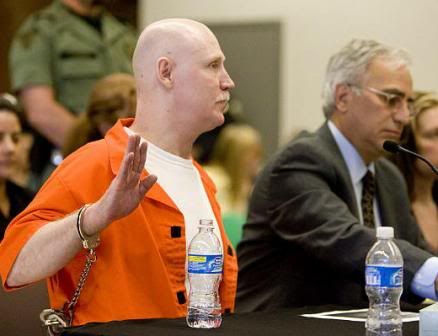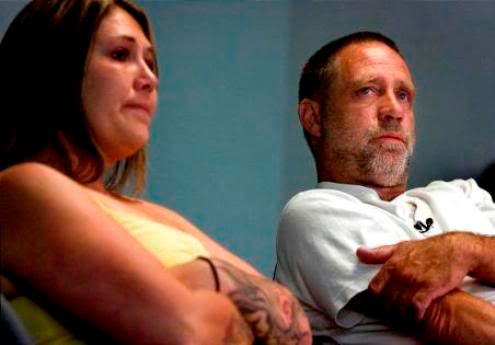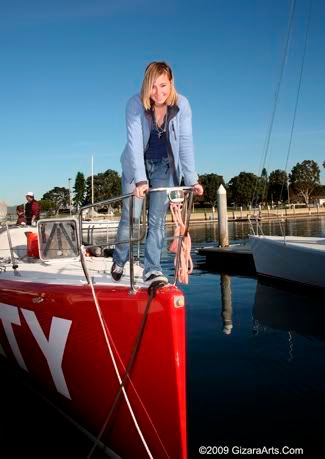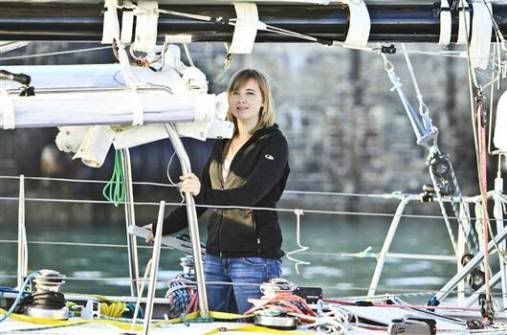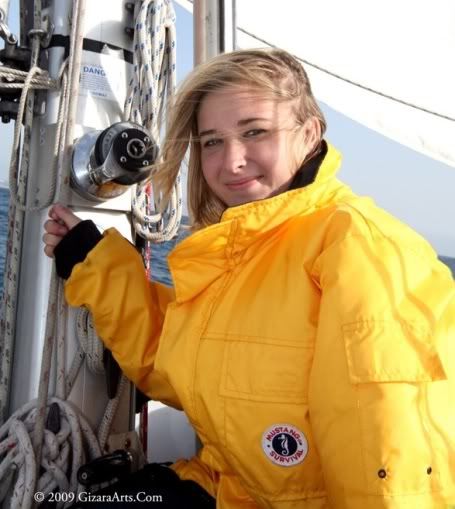SALT LAKE CITY, UT (kuer) - Utah's death row inmate Ronnie Lee Gardner is set to be executed just after midnight tonight. The families of Gardner's victims have shared the same wrenching pain for the 25 years he's been on death row. But some of them have very different views on his execution. KUER's Jenny Brundin tells their stories.
For 25 years Ronnie Lee Gardner has tried to evade the death chamber. And for 25 years Veldean Kirk has waited to see him walk into it.
KIRK: It'll be a closure, because for 25 years, it hasn't closed a bit.
Kirk and her daughter Tami Stewart are sitting at the kitchen table. The Sunday paper is spread out in front of them. There's a full day spread on what happened April 2, 1985. That's the day a bullet ripped through Kirk's husband's stomach.
STEWART: He was still facing him. KIRK: He was facing Gardner, and Gardner had the gun in his hand .
Every detail of that day is burned into their memories. Gardner was in court on a murder charge when he tried to escape using a gun slipped to him by an accomplice. As he fled, he shot and killed attorney Michael Burdell, and severely wounded Nick Kirk. For a quarter of a century, the victims' families have lived the anguish of not knowing whether or not Gardner would be put to death.

Here's Barb Webb, Kirk's older daughter.
WEBB: Every time Gardner's names brought up, he's either appealing this, he wants the death penalty, then he doesn't want the death penalty, it brings everything back that happened on April 2, 1985 over and over again. We all have to relieve it. Every single family has to go through the same thing that they went through on that day. Enough is enough.
Where Barb comes across as tough and angry, her younger sister Tami Stewart is tender and cries easily. The family calls her the soft-hearted one. What happened to her father twenty-five years ago has been present every day of her life.
STEWART: It's a mess. And I'm tired, like Barb, I'm tired of hearing his name, and I'm tired of remember how Dad felt that day and how sad it was .I'm just tired of it.

Donna Nu met Michael Burdell, the man who six years later would be one of Gardner's victims, at discussion group in Arizona. They would talk about who they were, why humans were on Earth, and the nature of creation - and they tried to practice the concepts they learned about.
NU: Well Michael would invariably verbalize exactly what I'd experienced.
The two would drive up once a month to Salt Lake City to take classes in spirituality. Their relationship deepened and evolved. Nu remembers vividly a night they spent together visiting a Vietnam veteran friend at the VA hospital after they'd both moved to Salt Lake City. She drove Burdell home.

NU: He said thank you in such a way that jolted my soul - it was a thank you that was more than just thanks for the ride. It just went very deep.
The next day Michael Burdell was murdered. As Ronnie Lee Gardner tried to escape from a Salt Lake City courthouse, he shot Burdell in the face. The bullet entered Burdell's eye at point blank range. Nu remembers seeing him in the hospital..
NU: And then it was like it was like I had run full force on, into a brick wall, that's what it felt like.
The Kirk family is tight-knit. They like to joke around and have fun. And Nick Kirk was the ring-leader. The father and grandfather everyone loved. He liked to scare the grandchildren on Halloween; he took them boating and fishing. And his two daughters Tami Stewart and Barb Webb say he loved to laugh.
WEBB: On April 2, 1985, that all changed, because he wasn't that type of person. STEWART: He was in pain.
Webb holds up a picture of her father.
WEBB: He went from looking like this, to a year and half after he was totally grey, he was like this little old man he couldn't do anything.
STEWART: But Dad did forgive Ronnie Lee before he died, that's what he told me, and he told me that I needed to do. WEBB: I think he did it because you're the one with the soft hearted one.
Webb tells her sister that her father did that because Stewart's the one with the soft heart. She thinks her father died hating Gardner.
WEBB: He knew his life as hunting and fishing and taking his grandchildren boating, and Gardner took all of that away from him that day he shot him.
Tami Stewart says she doesn't hate Gardner anymore, she feels sorry for him. But she can't forgive him. She imagines him sitting in the death chamber.
STEWART; He's going to feel that fear that he put into every one of those men. He's done, we've given him more than enough I think.
For Michael Burdell's family, putting Gardner to death they say, is not what Michael would have wanted. His father, Joseph Burdell Jr., testified that his murdered son would not want Gardner to die in his name. Donna Nu feels the same. She remembers her partner as a gentle, positive soul who was for life.
NU: He certainly wouldn't want to be the reason that Ronnie Lee was killed.
Nu never had hatred for Ronnie Lee Gardner, she was too consumed with the loss of her partner. And she knew she had to move on.
DONNA: If I would have dwelt on it anymore, it probably would have killed me. I had to go beyond it. I had to use it as a launching point to go beyond. Because I had no choice. I could wallow, or I could go beyond.
Gardner recently contacted Donna Nu and by telephone, they had a lengthy conversation.
NU: He is sorry for it, he is sorry for what he's done. And he had no idea of the ramification that would he caused from all this. All he knew was what the little life he knew, he knew nothing beyond that. He'd never experienced .caring. He'd never experienced anything that we might call normal life. All he knew was the violence that he knew and the chaos that he grew up with. MUSIC
Kirk sits alone at her kitchen table, the telephone phone in front of her. Her family stands nearby. Ronnie Lee Gardner has requested to talk with her to apologize. Several minutes pass. KIRK: I wonder if I was supposed to call him? DAUGHTERS: No, you wouldn't have .
45 more minutes pass.
KIRK: Now, I'm getting kind of angry.
The family has to call the prison to see what's going on. Because of miscommunication and the fact that a documentary team is present to interview Kirk only afterwards, the call doesn't happen. It turns out, Gardner, wanted to talk to the families privately. So the family was left waiting, with no phone call.
KIRK: You think he, they, would have at least tried to call to explain what was going on.

Donna Nu and Michael Burdell's father haven't met VelDean Kirk's family. Both families say they respect how each other feels about executing Gardner. Donna Nu:
DONNA: and I understand their pain because I had it for ..I still so I know the pain.
She just simply cannot understand the death penalty.
DONNA: What are we doing? What purpose are we serving? What are we gaining? .why would we kill each other?
And VelDean Kirk struggles with comprehending the views of Donna Nu and Michael Burdell's father, Joseph.
KIRK: How could you stand there and say you don't believe in the death penalty and he shouldn't die when he killed your son? I mean, I just can't understand that way of thinking!
VelDean Kirk will be a witness to Gardner's execution.
It's Monday. VelDean Kirk is leaving the prison. The Board of Pardons has just denied Gardner's request for life without parole. Kirk says his execution will bring closure.
KIRK: It'll just be over with. I don't know how to explain it. It'll be over with.
No one from Michael Burdell's family will be there. But Donna Nu says she and Michael believed that life is eternal. They often talked about their next lives. She says Burdell was excited, and looking forward to it. It just came too soon.


